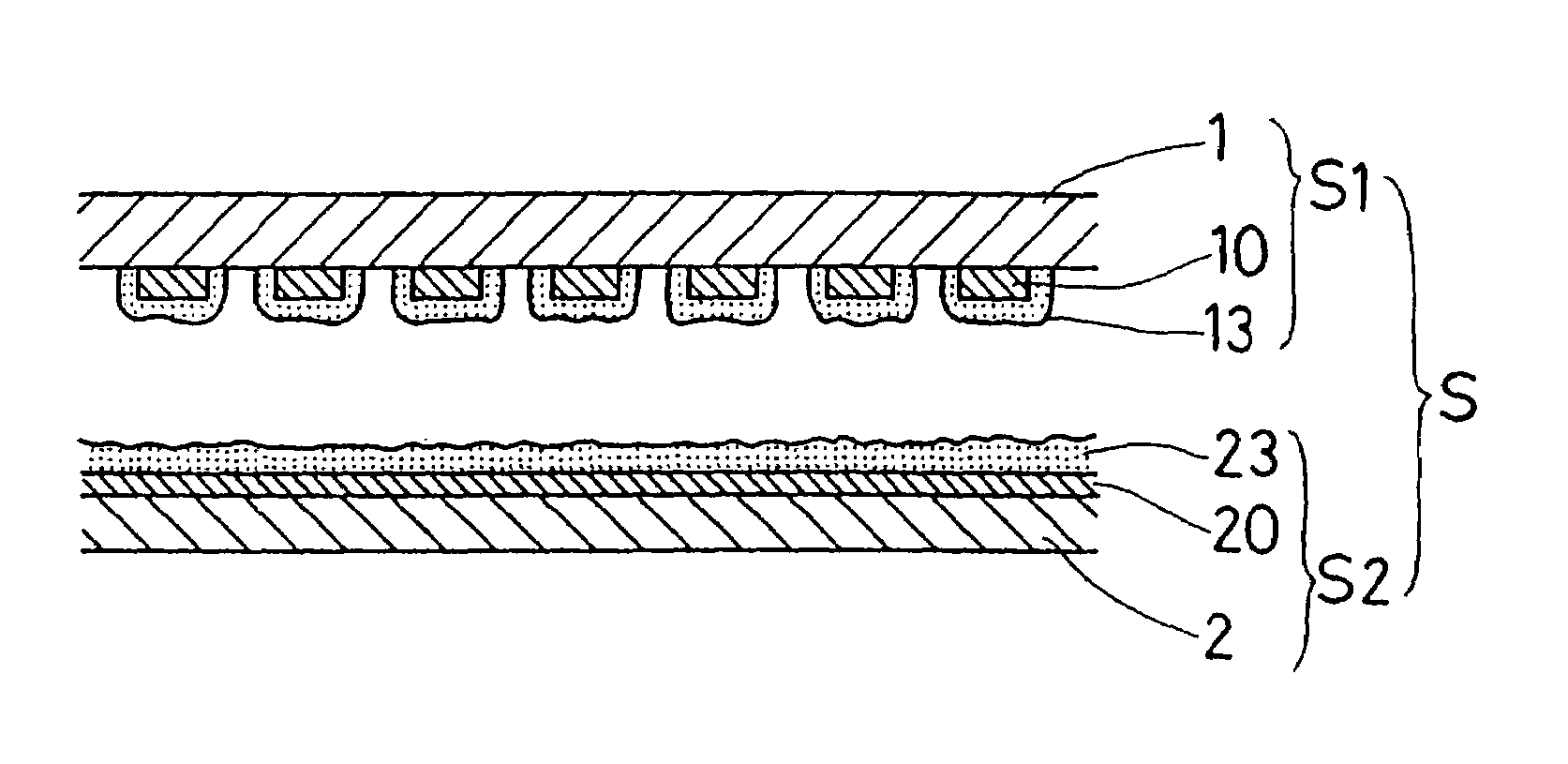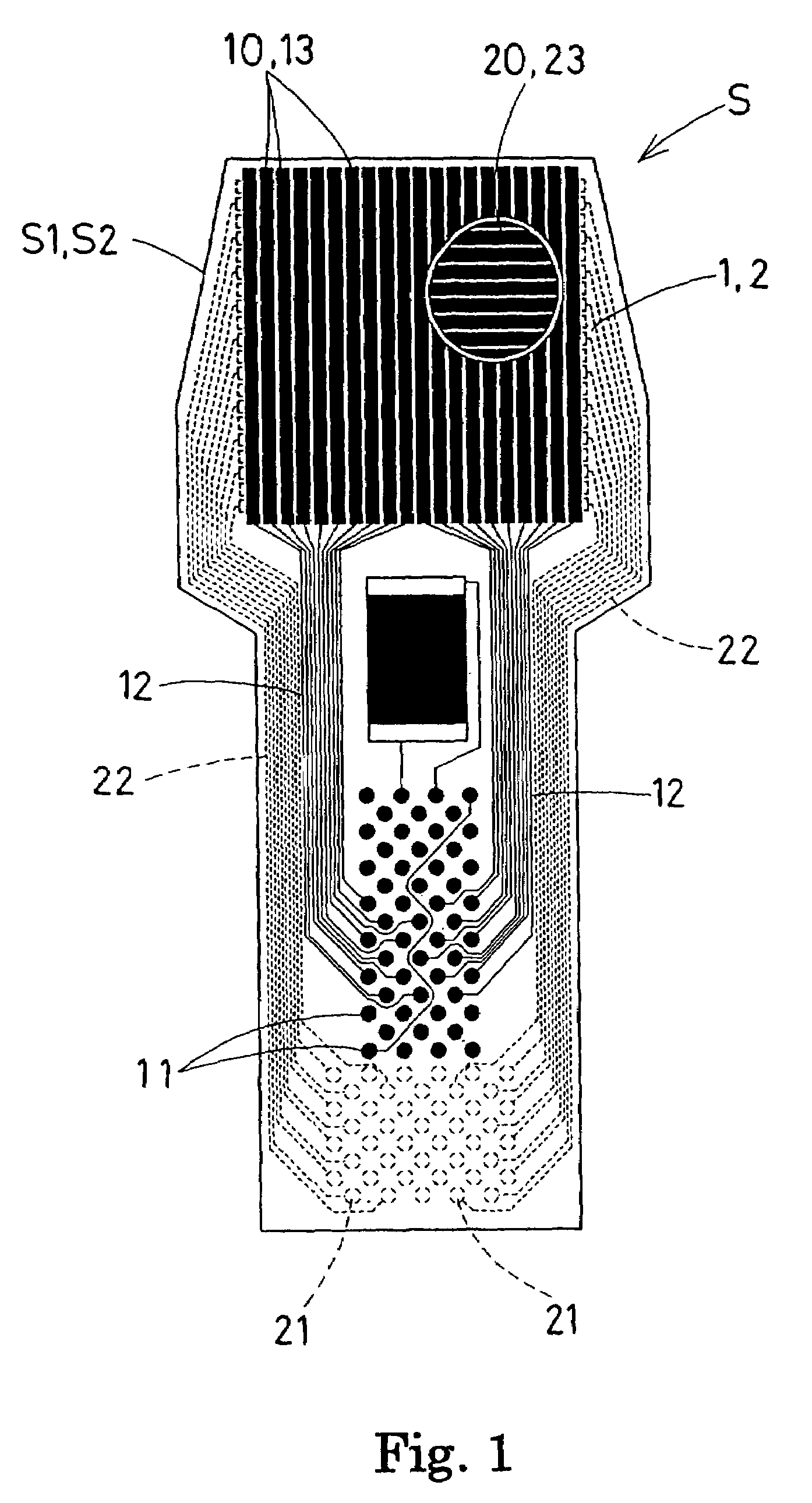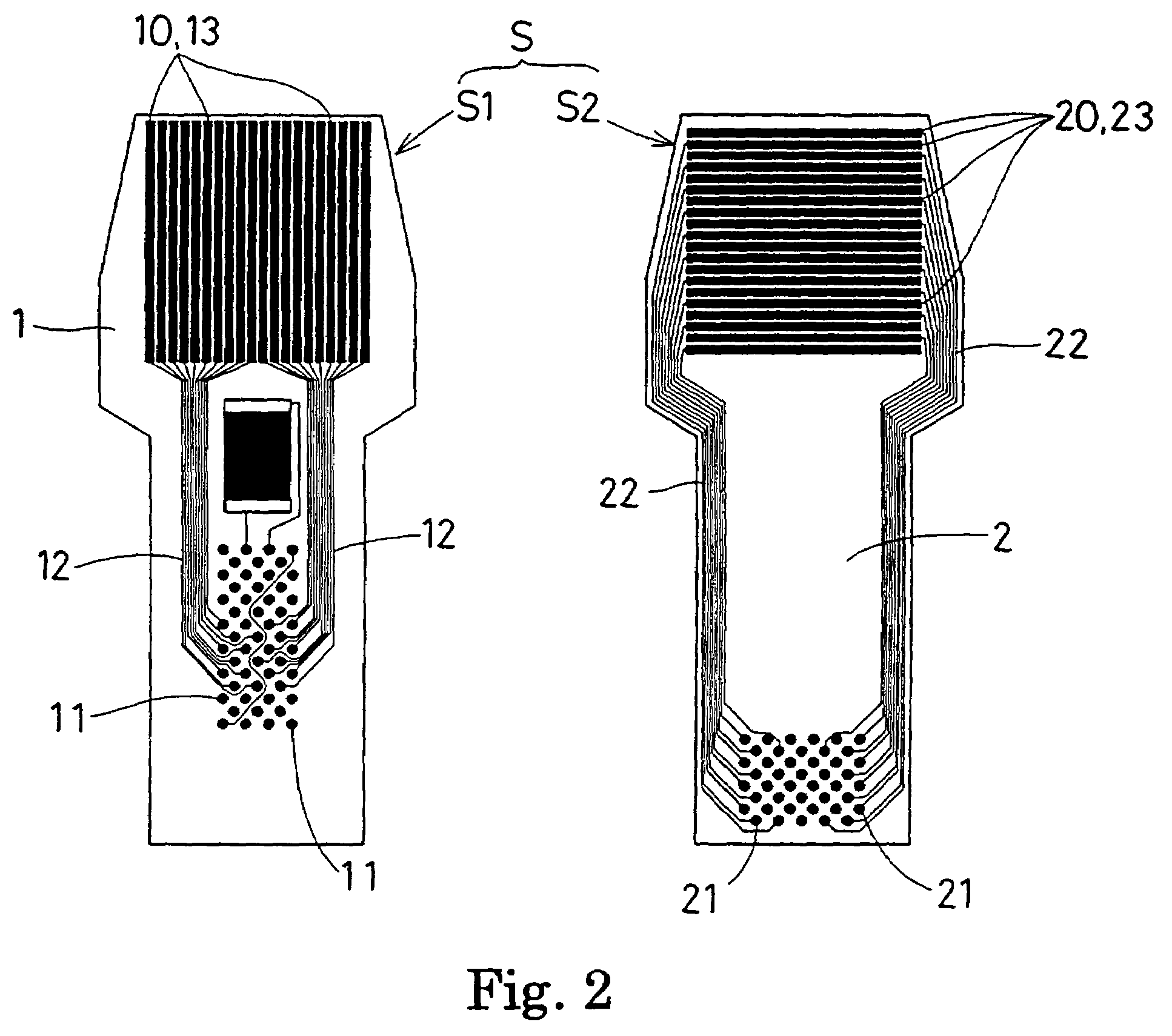Pressure-sensitive sensor
a pressure sensor and sensor technology, applied in the field of pressure sensitive sensors, can solve the problems of poor low output stability at high temperature (85° c. ), and achieve the effects of improving output stability, reducing output irregularities, and favorable linearity of pressure sensitive outpu
- Summary
- Abstract
- Description
- Claims
- Application Information
AI Technical Summary
Benefits of technology
Problems solved by technology
Method used
Image
Examples
example 1
[0039]A varnish A solution and a varnish B solution were prepared from two-liquid curing type silicone elastomer base solutions. Specifically the varnish A solution was prepared by dissolving 100 parts by weight of a base solution A (manufactured by Jujo Chemical Co., Ltd., trade name: JELCON-SRV-BR(A)) into 67 parts by weight of a solvent (manufactured by Kyowa Hakko Kogyo Co., Ltd., trade name: Butycell Acetate) by heating at 90° C. The varnish B solution was prepared by dissolving 100 parts by weight of a base solution B (manufactured by Jujo Chemical Co., Ltd., trade name: JELCON-SRV-TC(B)) into 67 parts by weight of a similar solvent (manufactured by Kyowa Hakko Kogyo Co., Ltd., trade name: Butycell Acetate) by heating at 90° C.
[0040]Into 100 parts by weight of each of the varnish A and the vanish B solution were blended 5 parts by weight of conductive carbon black (manufactured by Lion Corp., trade name: Ketjen Black EC600JD) and 0.05 parts by weight of silane coupling agent (...
example 2
[0048]A varnish A solution and a varnish B solution, which made from two-liquid curing type silicone elastomer base solutions, were prepared in the same manner as in Example 1.
[0049]Into 100 parts by weight of each of the varnish A solution and the vanish B solution were blended 15 parts by weight of conductive carbon black (manufactured by Cabot Specialty Chemicals Inc., trade name: VALCANXC72-R) and 0.15 parts by weight of silane coupling agent (manufactured by Dow Corning Asia Corp., trade name: DC-Z6040) and premixed therewith, followed by sufficient kneading with a roll mill to prepare an conductive ink A solution and an conductive ink B solution.
[0050]Into 100 parts by weight of each of the varnish A solution and the varnish B solution were blended 15 parts by weight of silicon dioxide (manufactured by Japan Aerosyl Co., Ltd., trade name: Aerosyl R812) and premixed therewith, followed by sufficient kneading with a roll mill to prepare an insulating ink A solution and an insula...
example 3
[0056]A varnish A solution and a varnish B solution, which are made from two-liquid curing type silicone elastomer base solutions, were prepared in the same manner as in Example 1.
[0057]Into 100 parts by weight of each of the varnish A solution and the vanish B solution were blended 10 parts by weight of carbon black (PRINTEX XE-2B BEADS) and 0.10 part by weight of silane coupling agent (manufactured by Dow Corning Asia Corp., trade name: DC-Z6040) and premixed therewith, followed by sufficient kneading with a roll mill to prepare an conductive ink A solution and an conductive B solution.
[0058]Into 100 parts by weight of each of the varnish A solution and the vanish B solution were blended 15 parts by weight of silicon dioxide (manufactured by Japan Aerosyl Co., Ltd., trade name: Aerosyl R812) and premixed therewith, followed by sufficient kneading with a roll mill to prepare an insulating ink A solution and an insulating ink B solution.
[0059]Equal parts by weight of the conductive ...
PUM
| Property | Measurement | Unit |
|---|---|---|
| particle size | aaaaa | aaaaa |
| particle size | aaaaa | aaaaa |
| temperatures | aaaaa | aaaaa |
Abstract
Description
Claims
Application Information
 Login to View More
Login to View More - R&D
- Intellectual Property
- Life Sciences
- Materials
- Tech Scout
- Unparalleled Data Quality
- Higher Quality Content
- 60% Fewer Hallucinations
Browse by: Latest US Patents, China's latest patents, Technical Efficacy Thesaurus, Application Domain, Technology Topic, Popular Technical Reports.
© 2025 PatSnap. All rights reserved.Legal|Privacy policy|Modern Slavery Act Transparency Statement|Sitemap|About US| Contact US: help@patsnap.com



